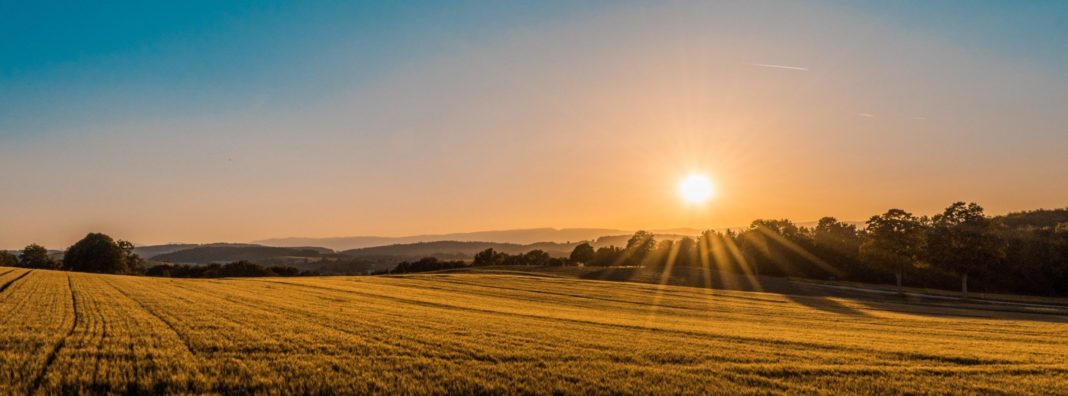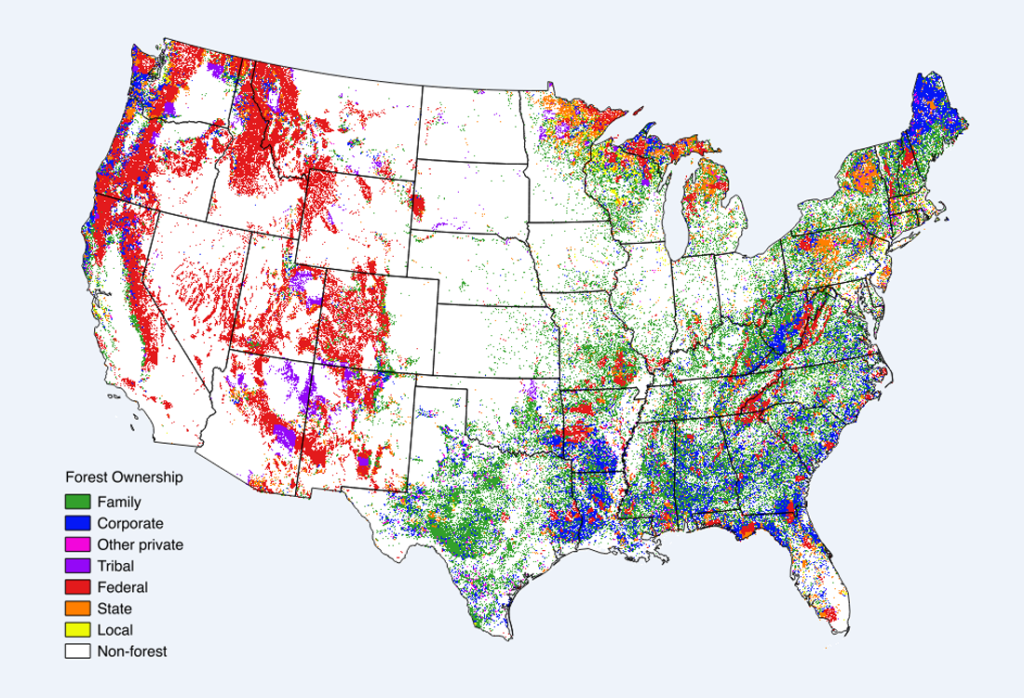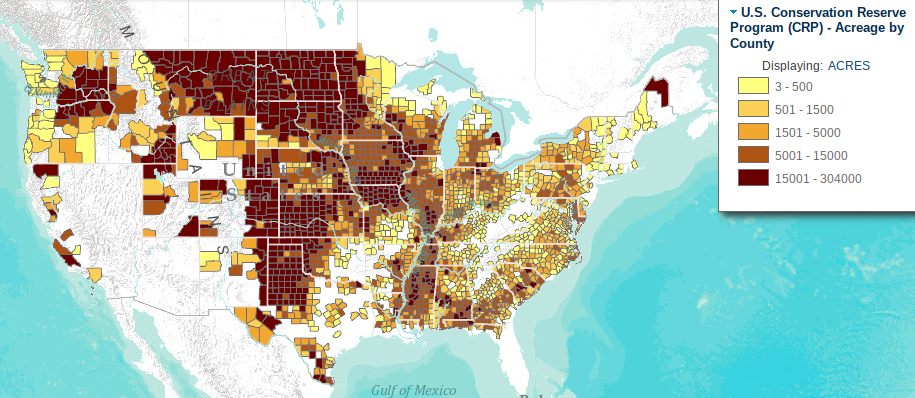
In May, the Biden Administration released a report detailing 8 principles that will guide its 30×30 plan, which promises to conserve 30 percent of U.S. land and water by 2030. This is a big commitment considering only 12 percent of lands and 23 percent of waters currently have permanent protection.
While conservation is a goal we can all get behind, the specifics of how this plan is carried out matter a great deal. Last month’s report provides some guide rails, but more detail will be needed to ensure conservation work translates into positive outcomes for the environment. It will be vital to leverage the powerful conservation potential of private land, which is home to a disproportionate share of our nation’s biodiversity.
What about federal lands?
When many people think of improving conservation, they think of increasing our nation’s vast federal network of national parks, forests, and wilderness areas. Of the 2.27 billion acres of land in the United States, about 28 percent is federally owned. Rather than only targeting federal conservation efforts, private lands will also be crucial to meeting our conservation goals in a meaningful way.
U.S. Land Ownership by Entity
Source: FWS
To reach the 30×30 goal, we will have to increase the amount of land that is being leveraged for conservation goals. Acquiring additional federal lands may not be the most promising solution. For one, there is already a massive backlog of unfinished repairs on our federal lands. As of 2019, this bill for unfinished maintenance was already over $19 billion. The National Park Service held the largest share at $12 billion. That backlog consists of needed repairs on roads, bridges, bathrooms, visitor centers, and trails. As the number of visitors to our national parks continues to reach record highs, these treasured places will need to be properly cared for.
It may also be true that we’ve reached the point of diminishing returns for conserving federal land — at least in terms of sheer area. Much of our federal lands are already permanently protected and face a lower likelihood of development. On the other hand, private lands have significant untapped conservation potential but are also at a higher risk of losing that potential due to development. According to the Center for American Progress, more than 75 percent of the natural area that was lost to development between 2001 to 2017 was privately owned. It’s crucial that we examine how to preserve the conservation potential of this forgotten asset. By leveraging the underrated, incredible conservation power of private lands, we can make big gains in conservation.
What’s so special about private lands?
Principle 6 of the Biden Administration’s report — “Honor Private Property Rights and Support the Voluntary Stewardship Efforts of Private Landowners and Fishers,” recognizes that local, voluntary efforts by communities and private landowners should be encouraged and rewarded. The strong stewardship ethic that is already shared by many ranchers, farmers, and stakeholders must fuel the protection of private lands.
Private lands contain habitat that is essential to the extremely biodiverse species that live on them. This land is especially important for the conservation of endangered species as 95 percent of them rely on private land for at least part of their habitat. About three-quarters of wetlands are located on private and tribal lands, providing important habitat for birds and aquatic life. Over half of U.S. forests are privately owned, and these lands provide 30 percent of our drinking water. Finally, private lands are often more productive, have higher soil quality, and are better watered than public lands. This productivity also tends to make them important as habitat and for other environmental goals.
Building on existing tools
Private landowners are not new to conservation. Surveys show that private landowners value conservation and want to be good stewards of their land. Many already participate in voluntary conservation programs offered by the federal government, state governments, and independent non-profit organizations across the country. Principle 8 of the Biden Administration’s report recognizes the importance of building on existing tools as well as emphasizing flexibility and adaptive approaches. For 30×30 to be successful, we will have to explore ways to expand existing programs as well as innovative approaches to engaging private landowners in new ways.
About 40 million acres of natural habitat in the United States is already protected through conservation easements. These voluntary agreements between landowners and land trusts or government agencies limit the future uses of the land for conservation purposes. In exchange for voluntarily setting aside their land for environmental goals, landowners receive valuable tax benefits. Congress enacted a new permanent tax incentive in 2015, providing a significantly increased tax break (of 50 percent from the previous 30 percent) that made donating conservation easements more advantageous for landowners.
One successful conservation easement in Orange, Virginia, lies along the Blue Ridge Mountains and spans 548 acres of woodlands. It is home to animals including deer, bald eagles, turtles, foxes, bears, and more. The owners head the Montebello Rosse Trust and decided to forever preserve their land, which is also rich with wetland and streams, to support the habitat of the diverse native species.
Another tool for private conservation is conservation banking. These banks are permanently designated stretches of land for which the FWS approves a certain number of habitat or species credits to the landowners. These credits can then be sold to developers to mitigate the impact their planned projects will have on species. As of 2019, there were 137 conservation banks operating across the U.S., which permanently conserve over 153,000 acres of land. Conservation banking could be expanded to engage more landowners in habitat conservation. Improvements could also be made to how the banks are operated to ensure that there are clear standards for how conservation banking credits are allocated.
Finally, the federal government has also created cash incentives for voluntary conservation such as the Conservation Reserve Program (CRP) and Working Lands for Wildlife (WLFW). The CRP offers annual payments to farmers who agree to take land out of production to protect the quality of the water and wildlife on their land. As of 2019, approximately 24 million acres of land were enrolled in the CRP.
Farmland Acreage enrolled in the CRP
Source: Data Basin
Working Lands for Wildlife, a partnership between the Natural Resources Conservation Service and the U.S. Fish and Wildlife Service, is another incentive-based voluntary conservation program. Currently, WLFW covers more than 6.7 million acres of wildlife habitat. It was founded in 2012 and offers payments to rural landowners in the West to protect eight threatened species on their properties. The condition of these animals is measured to monitor landowners’ progress because they are key species whose habitat needs represent the health of their ecosystems. Federal programs like the CRP and WLFW should be carefully examined to ensure they are structured to maximize environmental benefits and engage landowners in meaningful conservation efforts.
As the Biden Administration sets out on an ambitious conservation agenda, policymakers should carefully consider how to leverage private lands’ immense conservation potential. That will mean both leveraging existing tools for private conservation and thinking creatively about new tools that could help unleash this potential even further. Working cooperatively with private landowners will allow us to achieve a brighter conservation future that benefits both people and the environment.




